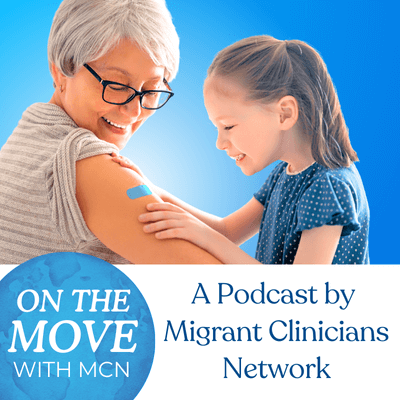How To Eliminate TB Among Migrants: New Report Features Health Network Case Study

How do countries utilize limited resources to effectively combat TB in mobile populations, who are often the hardest to reach and to maintain in care? Health Network is an international model proven to be effective in reducing TB among migrants. Health Network, Migrant Clinicians Network’s international bridge case management system, ensures that patients on the move can stay in care, regardless of their mobility, through case management, records transfer, and follow-up services.
At last year’s conference of the International Union Against Tuberculosis and Lung Disease, MCN’s Chief Medical Officer, Ed Zuroweste, MD, presented to the working group focused on eliminating TB among migrants. The workshop dove into data sharing, standardized care, and migrant-specific program funding to support community-driven TB prevention and treatment programs for mobile populations.
Dr. Zuroweste presented Health Network as an effective strategy to address TB among migrants. His Health Network case study was reproduced in the Union’s report from the workshop, as an example of effective data sharing:
Anisha (fictitious name), a 25 year old female from India, was in the US for six months with her husband on work visa doing IT work in a Midwestern State. She presented to the hospital with a two week history of fever, chills, cough, and shortness of breath, and was admitted on June 28, 2013, with a fever of 38.3 degrees celsius, weighing 43.1 kg, and ill appearing. Chest x-ray revealed right sided upper lobe infiltrate and right pleural effusion. Quantiferon tested positive and bronchoscopy indicated “caseating granulomas and positive acid fast bacilli (AFB) on smear. After a TB diagnosis, she began a RIPE regimen on July 16 but suffered severe nausea/vomiting with dehydration, anaemia (9.6/31), and severe weight loss to 36.7 kg (BMI 15.0) that eventually required a PEG tube for feeding, and a PICC stopped and she remained on the other three drugs throughout her treatment. (Pansensitive TB smear negative within two weeks of starting treatment).
Upon expressing pending return to India, she was referred to MCN’s Health Network (HN) Program where an associate contacted India NTP, sent INF with patient’s clinical information, and requested information of closest TB clinic. By September 5 2013, a MCN case manager spoke to her and learned that she would be seeking care with a private physician once she return to India on the 6th of September. To buffer this transition, she was already given two weeks of medication. Three weeks later, a HN case manager spoke with her in India and received the phone number of the private physician. Thereafter, the case manager spoke with a physician at the government hospital where the medical records had been sent, and confirmed that the patient was seeking care from a private physician. The HN case manager spoke with the private physician and sent all the medical records. The attending physician stated that the patient was in treatment and doing well. During the telephone correspondence, language was a noted barrier but it was resolved quickly when an appropriate interpreter was engaged.
From November 2013 to March 2014, monthly calls were made by the case manager to the private physician and he reported that the patient was doing consistently well. A final call was made to the patient on 10 April to confirm completion date on 25 March 2014 and was informed no further assistance would be required. MCN closed the case on 15 April 2014 and sent the confirmed treatment completion records back to the enrolling clinic in Midwest. Overall, 17 clinic calls were made, 12 to the patient, and a total of 48 pages were sent to two locations.
The working group report extensively covered other important takeaways from the workshop regarding standardizing care and effective data sharing. Read the full report here.
Like what you see? Amplify our collective voice with a contribution.
Got some good news to share? Send it to us via email, on Facebook, or on Twitter.
Return to the main blog page or sign up for blog updates here.
- Log in to post comments






